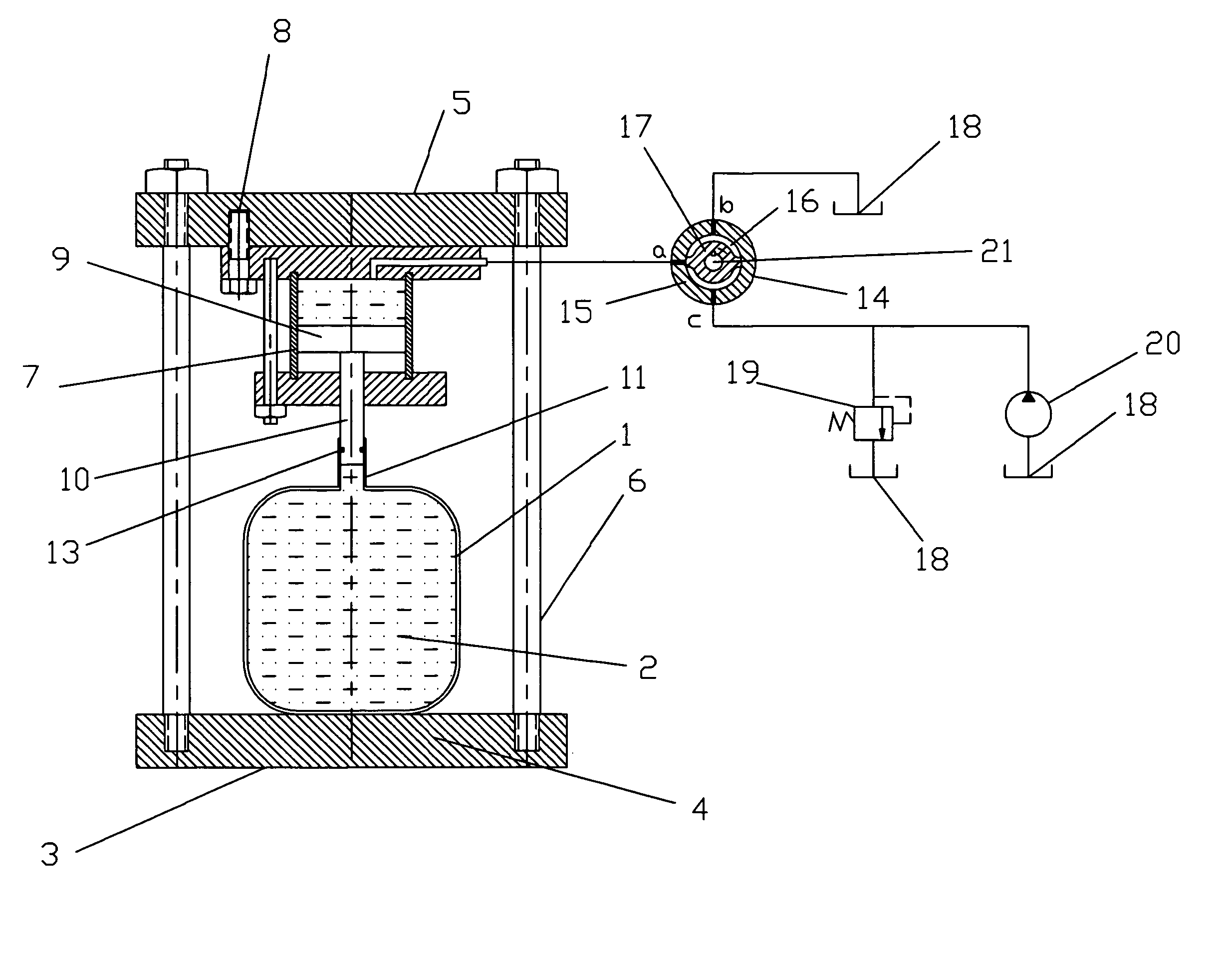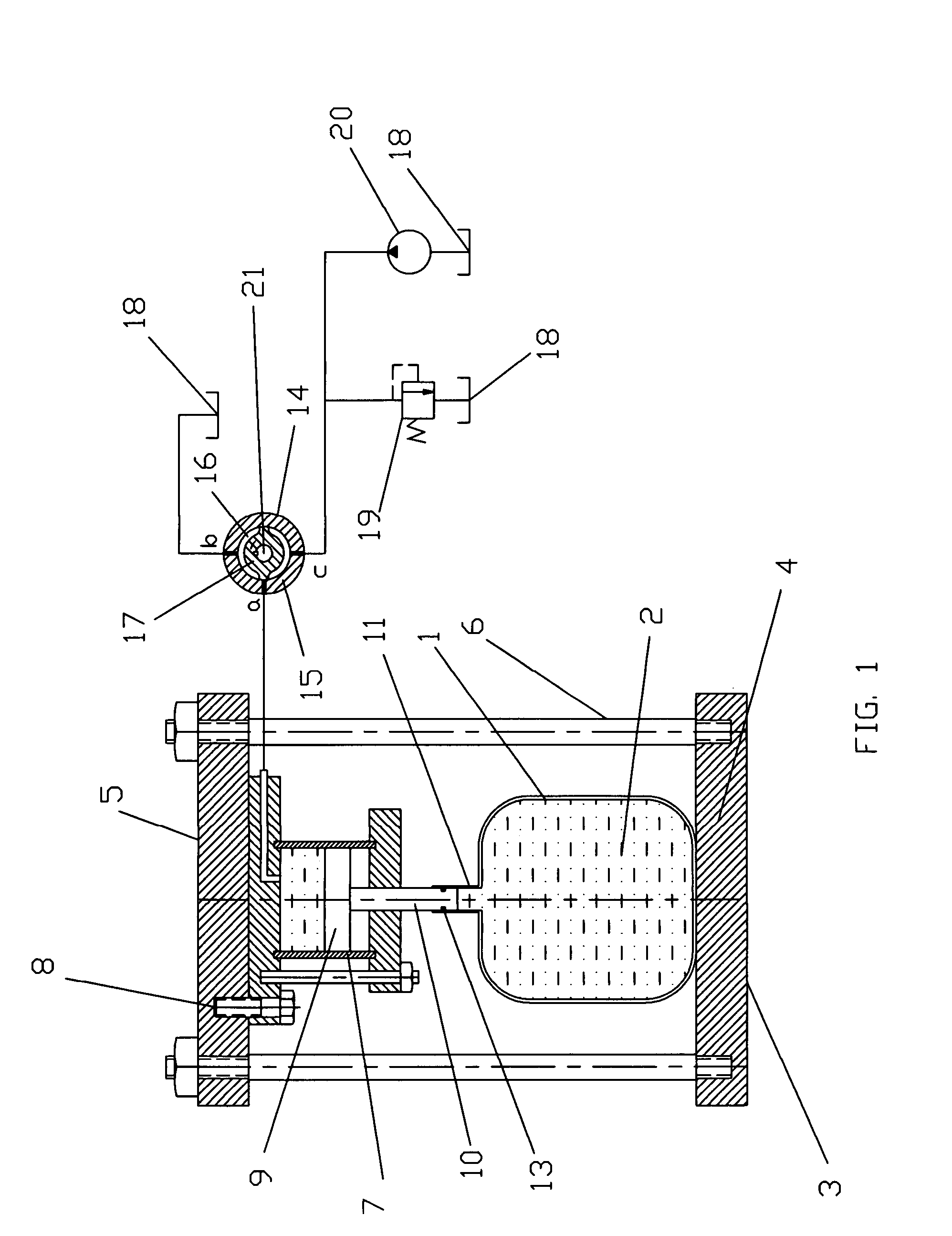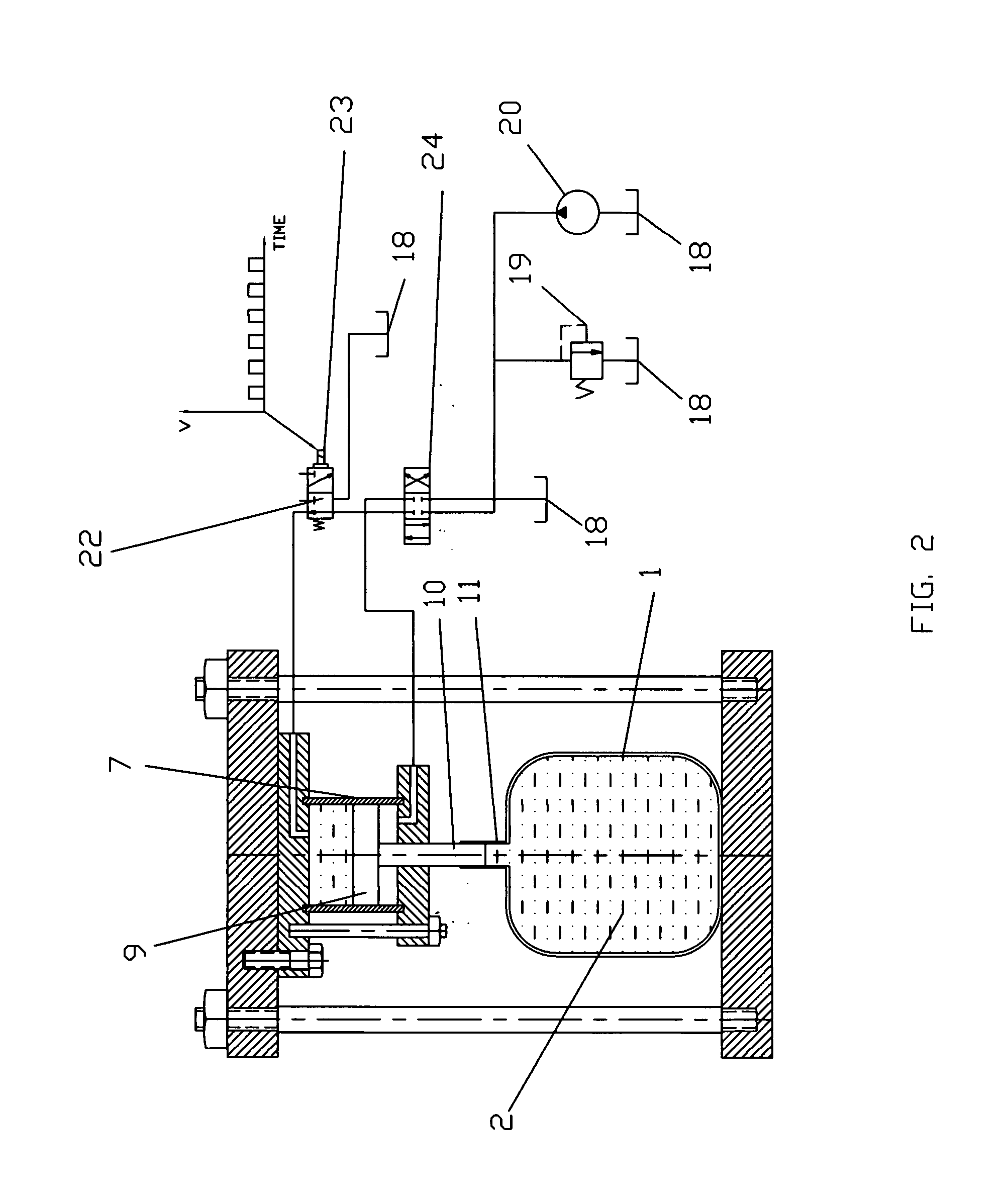Microbial inactivation by multiple pressure spikes delivered with regulated frequency
a technology of multiple pressure spikes and inactivation of bacteria, which is applied in the direction of mechanical vibration separation, water/sewage treatment by degassing, multi-stage water/sewage treatment, etc. it can solve the problems of high equipment capital investment, limited economic feasibility, and adverse effects on flavor, vitamin and protein content of final products, so as to achieve the effect of minimal negative effects on the overall quality of substances
- Summary
- Abstract
- Description
- Claims
- Application Information
AI Technical Summary
Benefits of technology
Problems solved by technology
Method used
Image
Examples
Embodiment Construction
[0033]With reference to FIG. 1, there is generally shown a cross sectional view of a system incorporating present invention. Vessel 1, containing substance under treatment 2, is placed on bottom plate 4 of stand 3. Stand 3 consists of plates 4 and 5 connected by columns 6. Columns 6 are formed to support the load induced by cylinder 7. Cylinder 7 is mounted to the top plate 5 by bolts 8. The cylinder's piston rod 10 is inserted into neck 11 of vessel 1. High pressure seal 13 is formed at the end of piston rod 10. Piston rod 10 is in contact with the treated substance 2. The volume above piston 9 in cylinder 7 is filled with oil and is connected to rotary valve 14. Rotary valve 14 consists of valve housing 15 and rotor 17. Rotor 17 is formed with two sealed chambers 16. Rotor 17 is connected through axle 21 to a motor with an adjustable speed rotation. Three openings, “a”, “b”, and “c”, are formed in valve housing 15. Opening “a” is connected to the piston side of cylinder 7. Opening...
PUM
 Login to View More
Login to View More Abstract
Description
Claims
Application Information
 Login to View More
Login to View More - R&D
- Intellectual Property
- Life Sciences
- Materials
- Tech Scout
- Unparalleled Data Quality
- Higher Quality Content
- 60% Fewer Hallucinations
Browse by: Latest US Patents, China's latest patents, Technical Efficacy Thesaurus, Application Domain, Technology Topic, Popular Technical Reports.
© 2025 PatSnap. All rights reserved.Legal|Privacy policy|Modern Slavery Act Transparency Statement|Sitemap|About US| Contact US: help@patsnap.com



